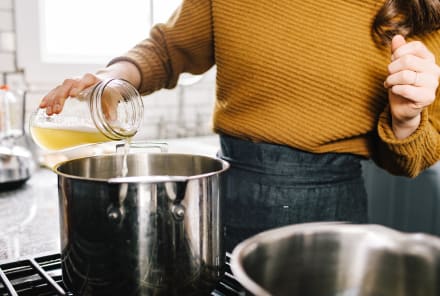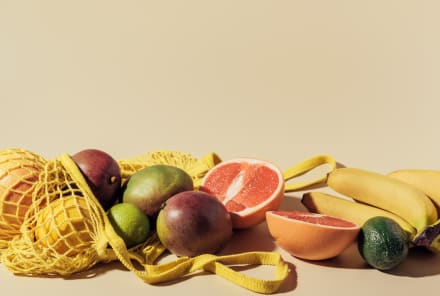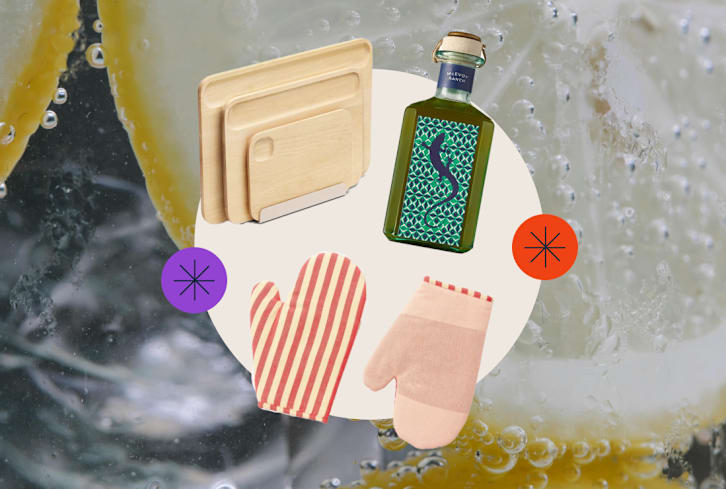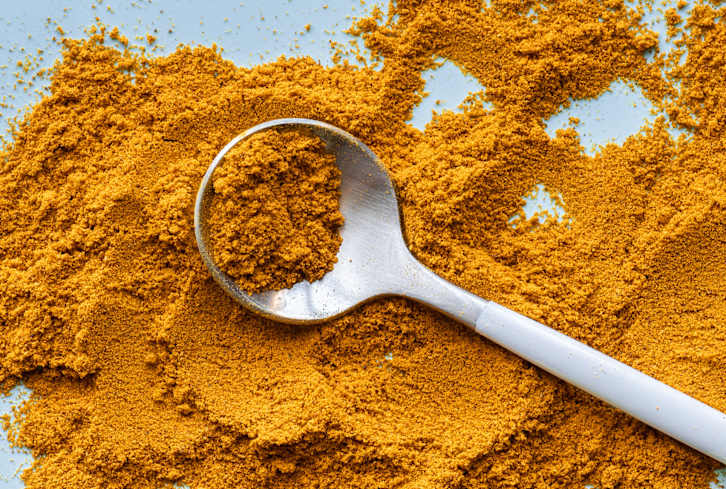Advertisement
6 Foods I Recommend Eating Every Day For A Long Life: A Doctor Explains


Whole-food, plant-based nutrition: pretty self-explanatory, right? But aren't some green-light foods better than others? For example, you can apparently live extended periods eating practically nothing but potatoes. That would, by definition, be a whole-food, plant-based diet—but not a very healthy one. All plant foods are not created equal.
So as the list of foods I tried to fit into my daily diet grew, I decided to make a checklist. Here are six I try and eat daily:
1. Beans
By beans, I mean legumes, which comprise all the different kinds of beans, including soybeans, split peas, chickpeas, and lentils. While eating a bowl of pea soup or dipping carrots into hummus may not seem like eating beans, it is. You should try to get three servings a day. A serving is defined as a quarter cup of hummus or bean dip; a half cup of cooked beans, split peas, lentils, tofu, or tempeh; or a full cup of fresh peas or sprouted lentils. Though peanuts are technically legumes, nutritionally, I've grouped them into the nuts category.
2. Berries
A serving of berries is a half cup of fresh or frozen, or a quarter cup of dried. While biologically speaking, avocados, bananas, and even watermelons are technically berries, I'm using the colloquial term for any small edible fruit, which is why I include kumquats and grapes (and raisins) in this category, as well as fruits that are typically thought of as berries but aren't technically, such as blackberries, cherries, mulberries, raspberries, and strawberries.
3. Cruciferous vegetables
Common cruciferous vegetables include broccoli, cabbage, collards, and kale. I recommend at least one serving a day (typically a half cup) and at least two additional servings of greens a day, cruciferous or otherwise.
4. Nuts
Everyone should try to incorporate 1 tablespoon of ground flaxseeds into his or her daily diet, in addition to a serving of nuts or other seeds. A quarter cup of nuts is considered a serving, or 2 tablespoons of nut or seed butters, including peanut butter. (Chestnuts and coconuts don't nutritionally count as nuts.)
5. Spices
I also recommend ¼ teaspoon a day of the spice turmeric, along with any other (salt-free) herbs and spices you may enjoy.
6. Whole grains
A serving of whole grains can be considered a half cup of hot cereal such as oatmeal, cooked grain such as rice (including the "pseudograins" amaranth, buckwheat, and quinoa), cooked pasta, or corn kernels; a cup of ready-to-eat (cold) cereal; one tortilla or slice of bread; half a bagel or English muffin; or 3 cups of popped popcorn.
How to make the checklist work for you.
I used the checklist initially as a tool to get me into a routine. Whenever I was sitting down to a meal, I would ask myself, Could I add greens to this? Could I add beans to that? (I always have an open can of beans in the fridge.) Can I sprinkle on some flax or pumpkin seeds, or maybe some dried fruit? The checklist just got me into the habit of thinking, How can I make this meal even healthier?
I also found the checklist helped with grocery shopping. Although I always keep bags of frozen berries and greens in the freezer, if I'm at the store and want to buy fresh produce for the week, it helps me figure out how much kale or blueberries I need.
The checklist also helps me picture what a meal might look like. Glancing at my plate, I can imagine one quarter of it filled with grains, one quarter with legumes, and a half plate filled with vegetables, along with maybe a side salad and fruit for dessert. I prefer one-bowl meals, in which everything's mixed together, but the checklist still helps me to visualize. Instead of a big bowl of spaghetti with some veggies and lentils on top, I think of a big bowl of vegetables with some pasta and lentils mixed in. Instead of a big plate of brown rice with some stir-fried vegetables on top, I picture a meal that's mostly veggies—and, oh, look! There's some rice and beans in there too.
But there's no need to be obsessive about the list. On hectic travel days when I've burned through my snacks and I'm trying to piece together some semblance of a healthy meal at the airport food court, sometimes I'm lucky if I even hit a quarter of my goals. If you eat poorly on one day, just try to eat better the next. My hope is that the checklist will serve you as a helpful reminder to try to eat a variety of the healthiest foods every day.
Watch Next
Enjoy some of our favorite clips from classes
Enjoy some of our favorite clips from classes
What Is Meditation?
Mindfulness/Spirituality | Light Watkins
Box Breathing
Mindfulness/Spirituality | Gwen Dittmar
What Breathwork Can Address
Mindfulness/Spirituality | Gwen Dittmar
The 8 Limbs of Yoga - What is Asana?
Yoga | Caley Alyssa
Two Standing Postures to Open Up Tight Hips
Yoga | Caley Alyssa
How Plants Can Optimize Athletic Performance
Nutrition | Rich Roll
What to Eat Before a Workout
Nutrition | Rich Roll
How Ayurveda Helps Us Navigate Modern Life
Nutrition | Sahara Rose
Messages About Love & Relationships
Love & Relationships | Esther Perel
Love Languages
Love & Relationships | Esther Perel
What Is Meditation?
Box Breathing
What Breathwork Can Address
The 8 Limbs of Yoga - What is Asana?
Two Standing Postures to Open Up Tight Hips
How Plants Can Optimize Athletic Performance
What to Eat Before a Workout
How Ayurveda Helps Us Navigate Modern Life
Messages About Love & Relationships
Love Languages
Advertisement
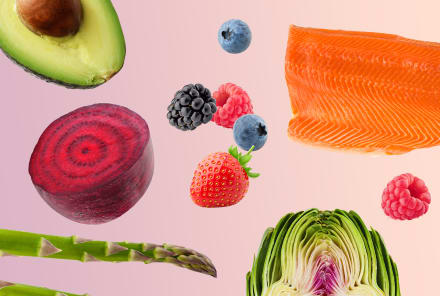
A Harvard Study Just Linked 4 Diets To Longevity: Here's What They Are
Gretchen Lidicker, M.S.

A Harvard Study Just Linked 4 Diets To Longevity: Here's What They Are
Gretchen Lidicker, M.S.

A Harvard Study Just Linked 4 Diets To Longevity: Here's What They Are
Gretchen Lidicker, M.S.

A Harvard Study Just Linked 4 Diets To Longevity: Here's What They Are
Gretchen Lidicker, M.S.
